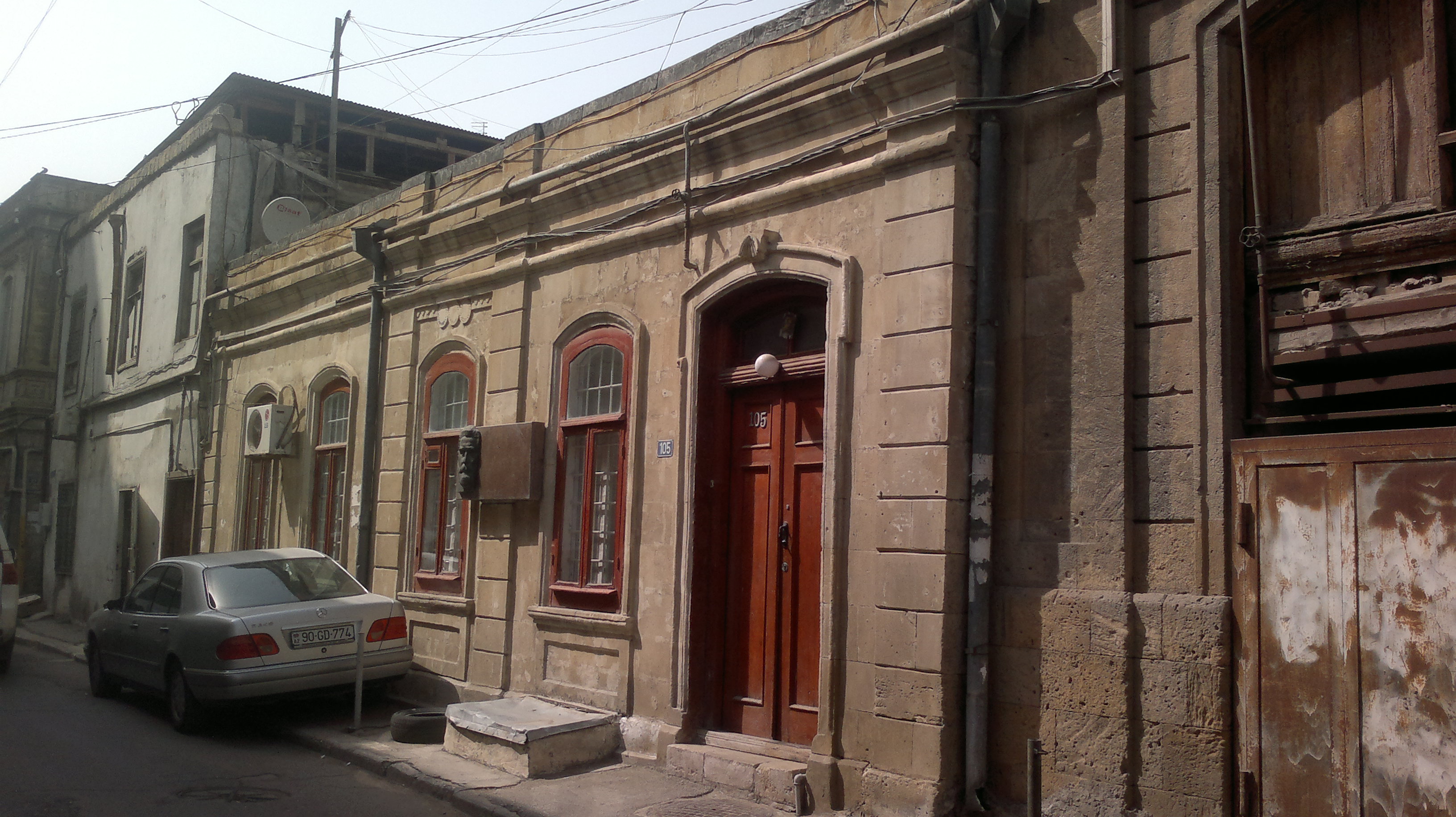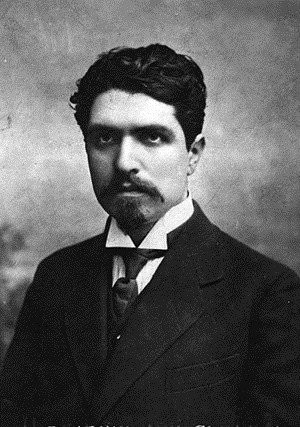|
Zarritap
Zaritap ( hy, Զառիթափ) is a village in the Vayk Municipality of the Vayots Dzor Province of Armenia. For a time the village was renamed in honor of Meshadi Azizbekov, an early Bolshevik and one of the 26 Baku Commissars. In the vicinity are 13th-century khachkar A ''khachkar'', also known as a ''khatchkar'' or Armenian cross-stone ( hy, խաչքար, , խաչ xačʿ "cross" + քար kʿar "stone") is a carved, memorial stele bearing a cross, and often with additional motifs such as rosettes, in ...s and the traces of an old fort. Etymology The village was previously known as ''Azizbekov'', ''Pashalu'' and ''Pashaghu''. References External links * Populated places in Vayots Dzor Province {{VayotsDzor-geo-stub ... [...More Info...] [...Related Items...] OR: [Wikipedia] [Google] [Baidu] |
Meshadi Azizbekov
Mashadi Azizbey oghlu Azizbeyov, also spelled Azizbeyov ( az, Məşədi Əziz bəy oğlu Əzizbəyov; russian: Мешади Азиз-бек оглы Азизбеков; January 6, 1876 - September 20, 1918) was a Soviet revolutionary of Azerbaijani origin, leader of the revolutionary movement in Azerbaijan, one of the first Azeri Marxists, Provincial Commissioner and Deputy People's Commissar of Internal Affairs, gubernial commissar for Baku. He was one of the 26 Baku Commissars. Azizbeyov became a member of Russian Social Democratic Labour Party and one of the leaders of Muslim Social Democratic Party. After the October Revolution he joined the Baku Comissars. As the Baku Commune was voted out of power in July 1918, Azizbeyov and rest of the Commissars abandoned Baku and fled across the Caspian Sea. However they were captured by anti-Soviet forces. On the night of September 20, Azizbeyov was executed by a firing squad in a remote location between the stations of Pereval and Ak ... [...More Info...] [...Related Items...] OR: [Wikipedia] [Google] [Baidu] |
Armenia
Armenia (), , group=pron officially the Republic of Armenia,, is a landlocked country in the Armenian Highlands of Western Asia.The UNbr>classification of world regions places Armenia in Western Asia; the CIA World Factbook , , and ''Oxford Reference Online'' also place Armenia in Asia. It is a part of the Caucasus region; and is bordered by Turkey to the west, Georgia to the north, the Lachin corridor (under a Russian peacekeeping force) and Azerbaijan to the east, and Iran and the Azerbaijani exclave of Nakhchivan to the south. Yerevan is the capital, largest city and the financial center. Armenia is a unitary, multi-party, democratic nation-state with an ancient cultural heritage. The first Armenian state of Urartu was established in 860 BC, and by the 6th century BC it was replaced by the Satrapy of Armenia. The Kingdom of Armenia reached its height under Tigranes the Great in the 1st century BC and in the year 301 became the first state in the world to adopt ... [...More Info...] [...Related Items...] OR: [Wikipedia] [Google] [Baidu] |
Provinces Of Armenia
Countries' first-level (top-level) administrative division Administrative division, administrative unit,Article 3(1). country subdivision, administrative region, subnational entity, constituent state, as well as many similar terms, are generic names for geographical areas into which a particular, ind ...s. ''Please note:'' This category's subcategories contain articles on each subdivision of the country while each directly included article considers the subdivisions structure of the country. ''Further note:'' This category's subcategories are indexed according to country, but its directly included articles are not: they are indexed by type of subdivision (provinces, counties, etc). Articles with non-English subdivision terms in their titles either have their redirects indexed instead, or are indexed by the common English translation for said subdivision. This facilitates comparisons between similarly named subdivisions. {{CatAutoTOC 1st-level ... [...More Info...] [...Related Items...] OR: [Wikipedia] [Google] [Baidu] |
Vayots Dzor Province
Vayots Dzor ( hy, Վայոց Ձոր, ) is a province (''marz'') of Armenia. It lies at the southeastern end of the country, bordering the Nakhchivan exclave of Azerbaijan to the west and the Kalbajar District of Azerbaijan to the east. It covers an area of . With a population of only 52,324 (2011 census), it is the most sparsely populated province in the country. The capital and largest city of the province is the town of Yeghegnadzor. The province is home to many ancient landmarks and tourist attractions in Armenia including the Areni-1 cave complex and Areni-1 winery of the Chalcolithic period, the 8th-century Tanahat Monastery, the 10th-century fortress of Smbataberd, and the 13th-century monastery of Noravank. Vayots Dzor is also home to the spa-town of Jermuk. The village of Gladzor in Vayots Dzor was home to the 13th and 14th-century University of Gladzor. Etymology The province is named after the Vayots Dzor canton of historic Syunik, the ninth province of Ancient ... [...More Info...] [...Related Items...] OR: [Wikipedia] [Google] [Baidu] |
Municipalities Of Armenia
A municipality in Armenia referred to as community ( hy, համայնք ''hamaynk'', plural: hy, համայնքներ ''hamaynkner''), is an administrative subdivision consisting of a settlement ( hy, բնակավայր ''bnakavayr'') or a group of settlements ( hy, բնակավայրեր ''bnakavayrer'') that enjoys local self-government. The settlements are classified as either towns ( hy, քաղաքներ ''kaghakner'', singular hy, քաղաք ''kaghak'') or villages ( hy, գյուղեր ''gyugher'', singular ( hy, գյուղ ''gyugh''). The administrative centre of a community could either be an urban settlement (town) or a rural settlement (village). Two-thirds of the population are now urbanized. As of 2017, 63.6% of Armenians live in urban areas as compared to 36.4% in rural. As of the end of 2017, Armenia has 503 municipal communities (including Yerevan) of which 46 are urban and 457 are rural. The capital, Yerevan, also has the status of a community. Each municipal ... [...More Info...] [...Related Items...] OR: [Wikipedia] [Google] [Baidu] |
Vayk Municipality
Vayk Municipality, referred to as Vayk Community ( hy, Վայք Համայնք ''Vayk Hamaynk''), is an urban community and administrative subdivision of Vayots Dzor Province of Armenia, at the southeastern end of the country. Consisted of a group of settlements, its administrative centre is the town of Vayk. Included settlements See also *Vayots Dzor Province Vayots Dzor ( hy, Վայոց Ձոր, ) is a province (''marz'') of Armenia. It lies at the southeastern end of the country, bordering the Nakhchivan exclave of Azerbaijan to the west and the Kalbajar District of Azerbaijan to the east. It cover ... References {{Muncipalities of Armenia Communities in Vayots Dzor Province 2016 establishments in Armenia ... [...More Info...] [...Related Items...] OR: [Wikipedia] [Google] [Baidu] |
Statistical Committee Of Armenia
The Statistical Committee of Armenia (Armenian: Հայաստանի վիճակագրական կոմիտե) is the national statistical agency of Armenia. History The statistical institution started its main activities on 7 January 1922 and was previously known as the Statistical Department of Soviet Socialist Republic of Armenia. It was also previously known as: - National Statistical Service of the Republic of Armenia (May 2000- April 2018) - Ministry of Statistics, State Register and Analysis of the Republic of Armenia (April 1998-May 2000), - State Department of Statistics, State Register and Analysis of the Republic of Armenia (1992-1998), - State Statistical Committee of the Soviet Socialist Republic of Armenia (1987-1992). International cooperation Armenia joined the International Monetary Fund's Special Data Dissemination Standard on 7 November 2003, being the third member of the Commonwealth of Independent States to join. From 1 January 2009, Armenia was a member ... [...More Info...] [...Related Items...] OR: [Wikipedia] [Google] [Baidu] |
Census In Armenia
Census in Armenia is a population census conducted in Armenia about every 10 years with the purpose of capturing exact data on demographics in the country. Demographic trends While Armenians formed a consistent majority, Azerbaijanis were historically the second largest population in the republic under Soviet rule (forming about 2.5% in 1989classification of world regions places Armenia in Western Asia; the CIA World Factbook , , and ''Ox ... Demographics of Armenia ... [...More Info...] [...Related Items...] OR: [Wikipedia] [Google] [Baidu] |
Armenia Time
Armenia Time (AMT) is a time zone used in Armenia. Armenia Time is four hours ahead of UTC at UTC+04:00. Clock time is about one hour later than solar noon in Armenia. Consequently, population activity hours are similar to those in Paris or Barcelona, which have about the same shift to solar time. They are about one hour later compared to those in Berlin and Vienna, and are two hours later than those in Warsaw and New York. Daylight saving time Armenia does not utilize Daylight saving time. The Government of Armenia issued a decree that cancelled the observance of daylight saving time, otherwise known as Armenia Summer Time (AMST) in 2012. Other time zones in UTC +4 Some time zones exist that have the same offset as AMT, but can be found under a different name in other countries, these include: [...More Info...] [...Related Items...] OR: [Wikipedia] [Google] [Baidu] |
26 Baku Commissars
The 26 Baku Commissars were Bolshevik and Left Socialist Revolutionary (SR) members of the Baku Commune. The commune was established in the city of Baku, which was then the capital of the briefly independent Azerbaijan Democratic Republic, and is now the capital of the Republic of Azerbaijan. The commune, led by Stepan Shahumyan, existed until 26 July 1918 when the Bolsheviks were forced out of power by a coalition of Dashnaks, Right SRs, and Mensheviks. After their overthrow, the Baku commissars attempted to leave Baku but were captured by the Centrocaspian Dictatorship and imprisoned. On 14 September 1918, during the fall of Baku to Ottoman forces, Red Army soldiers broke into their prison and freed the commissars; they then boarded a ship to Krasnovodsk, where they were promptly arrested by local authorities and, on the night of 20 September 1918, executed by a firing squad between the stations of Pereval and Akhcha-Kuyma on the Transcaspian Railway by soldiers of the As ... [...More Info...] [...Related Items...] OR: [Wikipedia] [Google] [Baidu] |
Khachkar
A ''khachkar'', also known as a ''khatchkar'' or Armenian cross-stone ( hy, խաչքար, , խաչ xačʿ "cross" + քար kʿar "stone") is a carved, memorial stele bearing a cross, and often with additional motifs such as rosettes, interlaces, and botanical motifs. ''Khachkars'' are characteristic of medieval Christian Armenian art.The Grove Encyclopedia of Medieval Art and Architecture. — Oxford University Press, 2012. — Vol. 2. — P. 222.''"'Khatck'ar' rmen.:'cross-stone'Typical Armenian stone monument, comprising an upright slab (h. c. 1—3 m) carved with a cross design, usually set on a plinth or rectangular base. "'' Since 2010, khachkars, their symbolism and craftsmanship are inscribed in the UNESCO list of Intangible Cultural Heritage. Description The most common ''khachkar'' feature is a cross surmounting a rosette or a solar disc. The remainder of the stone face is typically filled with elaborate patterns of leaves, grapes, pomegranates, and bands o ... [...More Info...] [...Related Items...] OR: [Wikipedia] [Google] [Baidu] |




